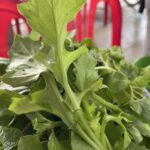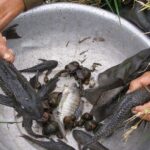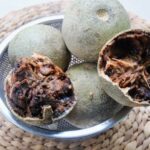Wild Delicacy with a Unique Flavor
The Asian rat snake, a wild species, often hides in the bushes along riverbanks, favoring habitats with an abundance of frogs and toads. Hence, locals often say, “Where there’s a chorus of frogs, there’s an Asian rat snake.”
This snake is distinguished by its black and white stripes and a distinctive onion-like scent when it moves, hence its colloquial name, “hổ hành,” which translates to “tiger onion.”

Typically, an adult Asian rat snake can weigh up to 800 grams. However, for the most delectable dish, cooks usually select snakes weighing around half a kilogram, as the meat tends to be more tender and retains its natural flavor.
Asian rat snakes move swiftly at night, presenting an exciting challenge for professional snake hunters.
The flooding season, from July to November each year, is the ideal time to hunt these snakes. As the water levels rise, the snakes lose their hiding places and are forced to move out, making them easier to capture. With prices reaching a few hundred thousand dong per kilogram, the Asian rat snake has become a significant source of income, improving the livelihoods of many families in the watery region.

Using these freshly caught snakes, the resourceful locals of the Mekong Delta have crafted a plethora of delectable dishes that satisfy even the most discerning palates. In Tien Giang, visitors can easily find a variety of snake meat dishes, including: deboned snake meat, snake porridge, snake wine, minced snake, and snake stewed with lemongrass.
Among these, snake hot pot is one of the most renowned and beloved dishes.
Cuisine Featuring the Asian Rat Snake
Asian Rat Snake Hot Pot
To prepare a delicious snake hot pot, chefs usually select larger snakes with sweeter, more tender meat. The snake is meticulously cleaned, beheaded, and singed over charcoal to dry the skin, which is then scraped clean of scales. The belly is opened, the intestines removed, and the meat is cut into chunks of about 3-5 cm.
The meat is then placed directly into a pot, covered with water, and cooked with crushed lemongrass for about 20 minutes. Next, chopped turnips are added, and the broth is seasoned to taste. This results in a clear, sweet, and aromatic broth.
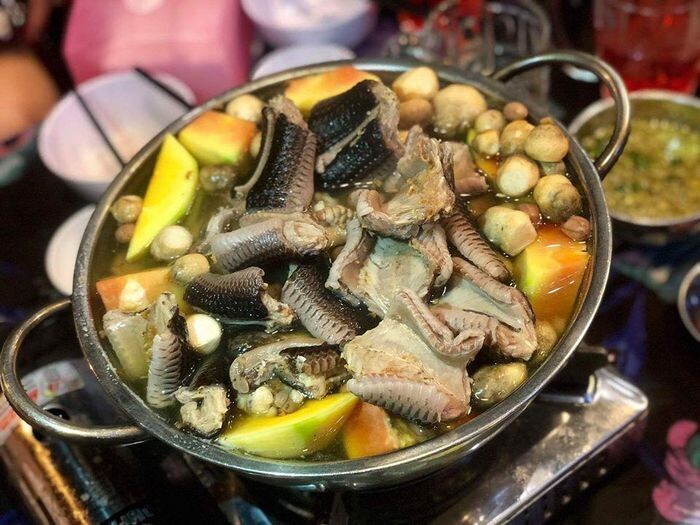
Although its appearance may be off-putting to some, the unique flavor of the snake meat, especially when dipped in fish sauce or chili salt, is sure to win over even the most hesitant diner. Locals also believe that this dish is not only tasty but also highly nutritious, especially for those feeling fatigued or weak, making it a popular choice for honoring esteemed guests.
Asian Rat Snake and Green Bean Porridge
To eliminate the onion-like scent of the snake meat, it is rubbed with fresh lemon juice before cooking. After being cut into pieces, the meat is added to a pot of porridge made with roasted rice and shelled green beans. When the porridge is soft, coconut milk is added for extra richness and aroma. The porridge is then stirred, boiled again, and served in bowls.
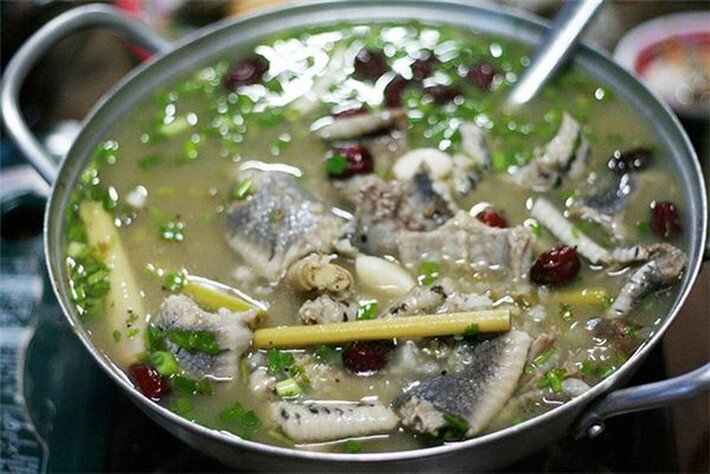
This porridge is often garnished with chopped scallions, cilantro, crushed peppercorns, or minced chili. For a more savory taste, one can add a dash of pure fish sauce. The aroma of the porridge, green beans, herbs, and spices creates an enticing blend. The snake meat is tender and sweet, its skin crunchy, the green beans add a subtle nutty flavor, and the coconut milk lends a creamy richness, making this dish an unforgettable specialty of the watery region.
Asian Rat Snake Stewed with Lemongrass and Chili
For connoisseurs in the Mekong Delta, Asian rat snake stewed with lemongrass and chili is a favorite dish, especially when paired with rice liquor. This dish is not only easy to prepare but also retains the natural sweetness and fragrance of the snake meat. After cleaning and cutting the meat into pieces, it is cooked in a pot with lemongrass and seasoned with spices. The strong lemony scent of the lemongrass mutes the onion-like aroma of the snake, leaving a rich, savory taste that keeps diners coming back for more.
Savoring this stew by the riverbank, immersed in the peaceful atmosphere of the Mekong Delta, is an irresistible experience, akin to indulging in a heavenly gift from the flood-prone region.
Stir-fried Asian Rat Snake with “Lá Cách” Leaves
In addition to alcoholic accompaniments, the Asian rat snake can also be prepared as a stir-fried dish with “lá cách” leaves, suitable for both women and children. Compared to other cooking methods, this dish is more labor-intensive but offers a memorable culinary experience. The meat is cleaned, deboned, and minced, then marinated with salt, fish sauce, sate, sugar, and garlic to absorb the flavors.
It is then quickly stir-fried over high heat until fragrant, after which the finely chopped “lá cách” leaves are added and stir-fried until they wilt. The combination of sweet and savory snake meat, robust spices, and the subtle bitter taste of the “lá cách” leaves creates a unique and captivating dish.
“Lá cách” leaves are versatile and can be paired with various dishes, but when combined with snake meat, they create an extraordinary fusion of flavors that leaves a lasting impression, showcasing the distinctive cuisine of the Mekong Delta.
Despite being a humble dish with typical ingredients of the watery region, the Asian rat snake has become a renowned specialty throughout the Mekong Delta. For those who have had the opportunity to visit this region and indulge in the various dishes featuring this snake, the unique and exquisite flavors are unforgettable. The Asian rat snake is not just a dish but also a part of the cultural fabric of the region, a culinary symbol of the Mekong Delta that beckons adventurers to explore and experience its delights.
The Wild Vegetable That Grows Unharvested, Now a Delicacy for Its Crisp Sweetness, Sought After by Connoisseurs.
In the wind-swept hills of Nam Tra My, Quang Nam, amidst the vast and majestic forests, lies a culinary treasure known as “rau luoi” or “rau lui.” This wild mountain vegetable has transcended its humble origins and emerged as a renowned delicacy, sought after by discerning food connoisseurs as a precious gift from nature itself.

























